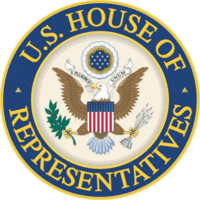
 Last week, legislation was introduced in the House of Representatives that would amend 35 U.S.C. § 102(b) "to correct the drafting problem in the Leahy-Smith America Invents Act relating to the grace period." The bill, entitled the "Grace Period Restoration Act of 2015" (H.R. 1791), was sponsored by Rep. James Sensenbrenner (R-WI) and co-sponsored by Rep. John Conyers, Jr. (D-MI).
Last week, legislation was introduced in the House of Representatives that would amend 35 U.S.C. § 102(b) "to correct the drafting problem in the Leahy-Smith America Invents Act relating to the grace period." The bill, entitled the "Grace Period Restoration Act of 2015" (H.R. 1791), was sponsored by Rep. James Sensenbrenner (R-WI) and co-sponsored by Rep. John Conyers, Jr. (D-MI).
As set forth in a summary of the bill provided by the sponsors, the AIA replaced the previous grace period with a new version providing that certain disclosures that occur less than one year before a patent application filing could be considered as prior art, thereby defeating patent rights. The summary contends that "[t]he prior grace period that encouraged early sharing of knowledge was replaced with a system that actually discourages early publication." In particular, the bill's proponents assert that:
The AIA includes language regarding the scope of the grace period during which an inventor who discloses an invention to the public may decide within a one-year period whether to make a patent application filing. The language is ambiguous. To make matters more confusing, the regulatory reading of the AIA by the U.S. Patent and Trademark Office does not comport with the clear intent of the AIA sponsors.
In order "to clarify that the grace period is truly a grace period" and remove uncertainty relating to the AIA grace period, the sponsors note that their bill would:
• protect an inventor against disclosures by anyone after the inventor has made a public disclosure of the claimed invention in a "printed publication"
• apply to any and all of an inventor's acts that are public disclosures that jeopardize right to a patent
• remove prior art under both sections 102 and 103 of the Patent Act
In particular, the bill would amend § 102(b) by adding the following text:
(3) DISCLOSURES BY ANY PERSON AFTER PUBLIC DISCLOSURE OF A CLAIMED INVENTION BY AN INVENTOR.
(A) DEFINITIONS.—In this paragraph—
(i) the term "covered person", with respect to a claimed invention, means—
(I) the inventor;
(II) a joint inventor; or
(III) another who obtained the claimed invention directly or indirectly from the inventor or a joint inventor; and
(ii) the term "relevant section 112(a) requirements" means the requirements for a specification under section 112(a) other than the requirement to set forth the best mode of carrying out the invention.
(B) PUBLIC DISCLOSURE.—A disclosure by any person shall not be prior art to a claimed invention under subsection (a) or section 103 if—
(i) the disclosure is made under subsection (a)(1) or effectively filed under subsection (a)(2) 1 year or less before the effective filing date of the claimed invention; and
(ii) before the disclosure described in clause (i) is made or filed, and 1 year or less before the effective filing date of the claimed invention, the claimed invention is publicly disclosed in a printed publication by a covered person in a manner that satisfies the relevant section 112(a) requirements.
(C) DETERMINATION THAT PUBLIC DISCLOSURE WOULD HAVE SATISFIED SPECIFICATION REQUIREMENTS.—In determining under subparagraph (B) whether a claimed invention was publicly disclosed in a printed publication by a covered person in a manner that satisfied the relevant section 112(a) requirements—
(i) only the state of the art known on and before the date of the disclosure may be considered; and
(ii) satisfaction of the relevant section 112(a) requirements may be—
(I) established by 1 or more public disclosures in printed publications made by a covered person during the period of 1 year or less between—
(aa) the disclosure by the covered person described in subparagraph (B)(ii); and
(bb) the effective filing date of the claimed invention; and
(II) supported by statements under declaration or oath relating to the existence and content of the public disclosure or disclosures in printed publications described in subclause (I).
(D) PRESUMPTION OF VALIDITY.—An applicant for a patent shall present to the Patent and Trademark Office, before the Patent and Trademark Office issues a notice of allowance of the application for the patent, each disclosure under subparagraph (C)(ii)(I) and any statement under subparagraph (C)(ii)(II) in order for the section 112(a) support provided by each such disclosure or statement under subparagraph (C)(ii) to be taken into account under the section 282(a) presumption of validity of an issued patent.
(E) CERTAIN DISCLOSURES NOT PRIOR ART.—A disclosure described in paragraph (1)(A), (2)(A), or (2)(C) shall not be prior art to a claimed invention under this paragraph.
(F) PROCEDURES.—The Patent and Trademark Office may establish procedures to carry out this paragraph.
Among the findings outlined in the legislation, the bill notes that:
(1) Language in the Leahy-Smith America Invents Act . . . and regulations and examination guidelines issued by the United States Patent and Trademark Office implementing provisions of that Act have created uncertainty regarding the scope of the 1-year grace period during which an inventor who discloses an invention to the public may decide whether to file a patent application for the invention . . . .
(2) The regulatory reading of the Leahy-Smith America Invents Act does not comport with the intent of the sponsors of that Act.
The legilsation particularly focuses on the impact of the AIA grace period on institutions of higher education and government laboratories, which the bill asserts "perform[] more than 50 percent of all basic research in the United States."
The legislation, which was introduced in the House on April 14, was then referred to the House Judiciary Committee. A companion bill is expected to be introduced in the Senate by Senator Tammy Baldwin (D-WI) and David Vitter (R-LA).